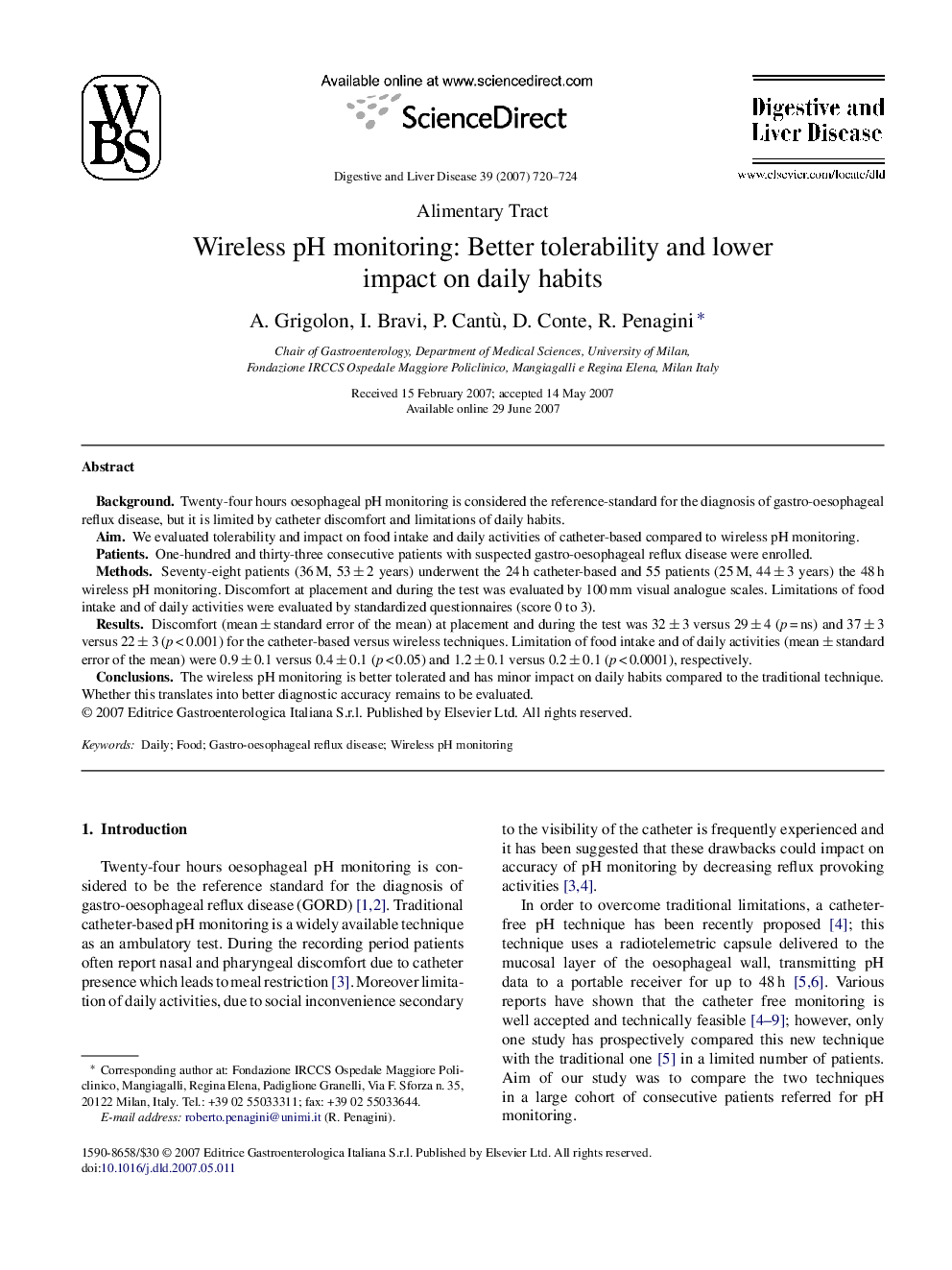| Article ID | Journal | Published Year | Pages | File Type |
|---|---|---|---|---|
| 3266202 | Digestive and Liver Disease | 2007 | 5 Pages |
BackgroundTwenty-four hours oesophageal pH monitoring is considered the reference-standard for the diagnosis of gastro-oesophageal reflux disease, but it is limited by catheter discomfort and limitations of daily habits.AimWe evaluated tolerability and impact on food intake and daily activities of catheter-based compared to wireless pH monitoring.PatientsOne-hundred and thirty-three consecutive patients with suspected gastro-oesophageal reflux disease were enrolled.MethodsSeventy-eight patients (36 M, 53 ± 2 years) underwent the 24 h catheter-based and 55 patients (25 M, 44 ± 3 years) the 48 h wireless pH monitoring. Discomfort at placement and during the test was evaluated by 100 mm visual analogue scales. Limitations of food intake and of daily activities were evaluated by standardized questionnaires (score 0 to 3).ResultsDiscomfort (mean ± standard error of the mean) at placement and during the test was 32 ± 3 versus 29 ± 4 (p = ns) and 37 ± 3 versus 22 ± 3 (p < 0.001) for the catheter-based versus wireless techniques. Limitation of food intake and of daily activities (mean ± standard error of the mean) were 0.9 ± 0.1 versus 0.4 ± 0.1 (p < 0.05) and 1.2 ± 0.1 versus 0.2 ± 0.1 (p < 0.0001), respectively.ConclusionsThe wireless pH monitoring is better tolerated and has minor impact on daily habits compared to the traditional technique. Whether this translates into better diagnostic accuracy remains to be evaluated.
